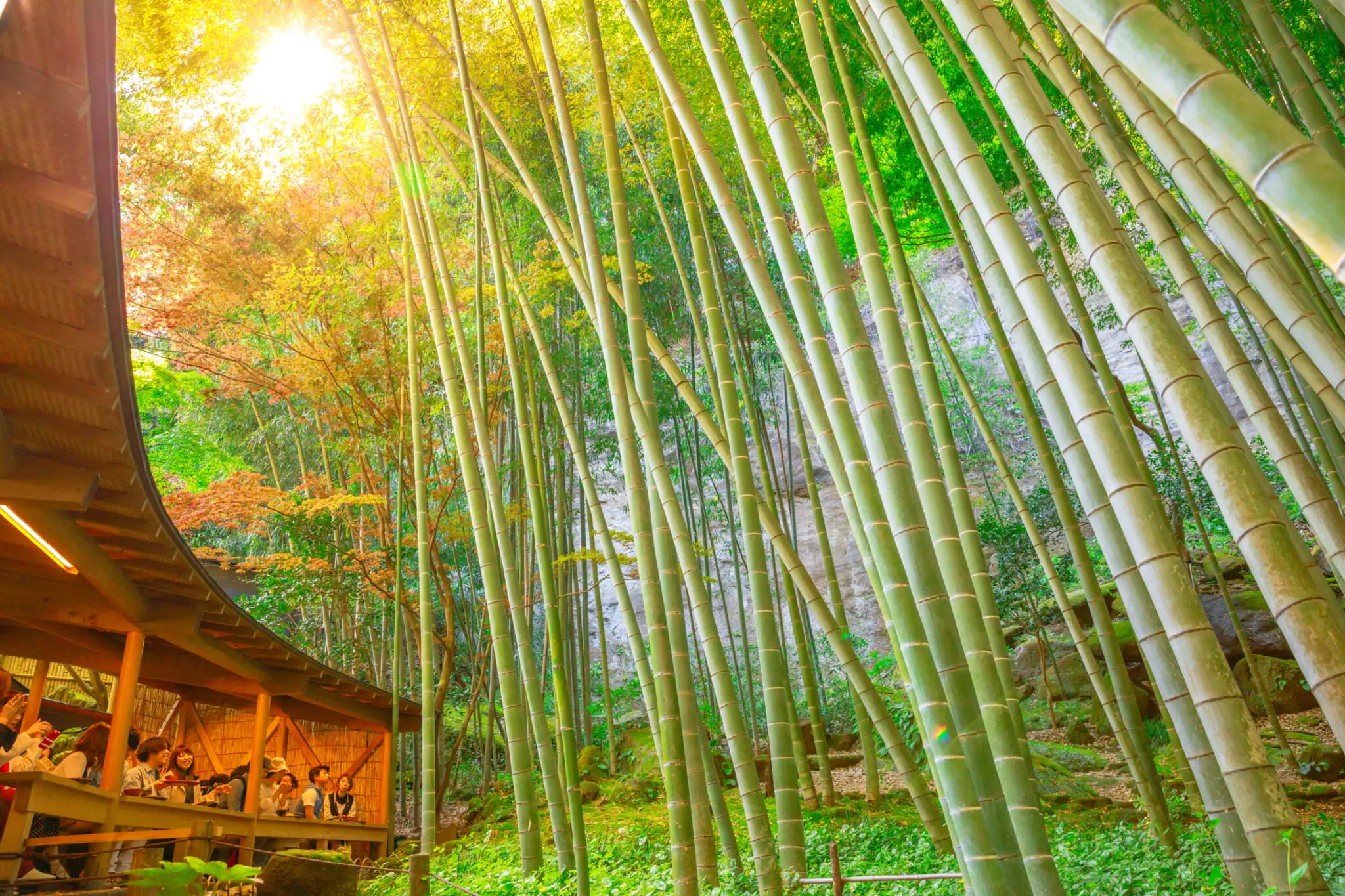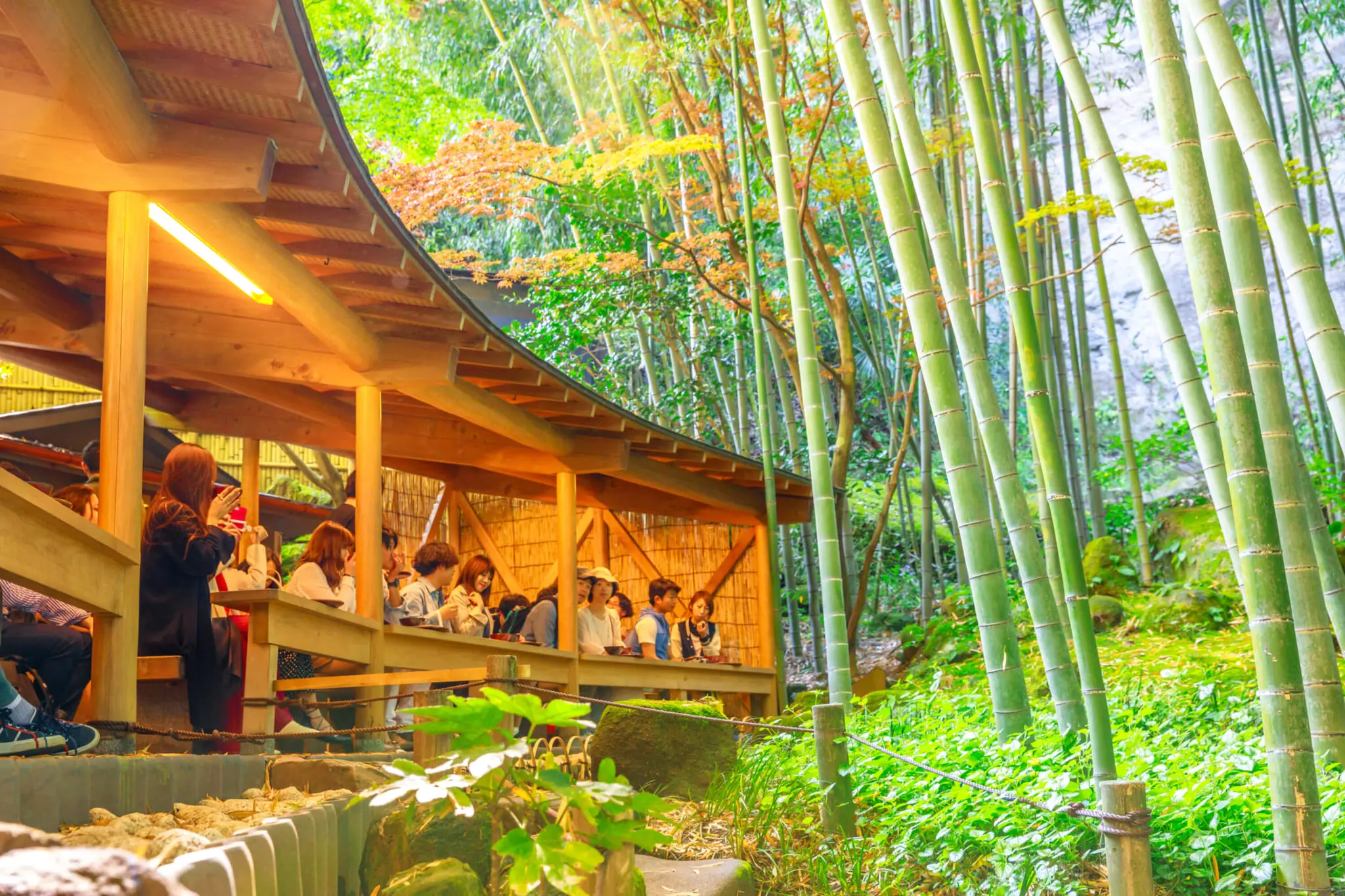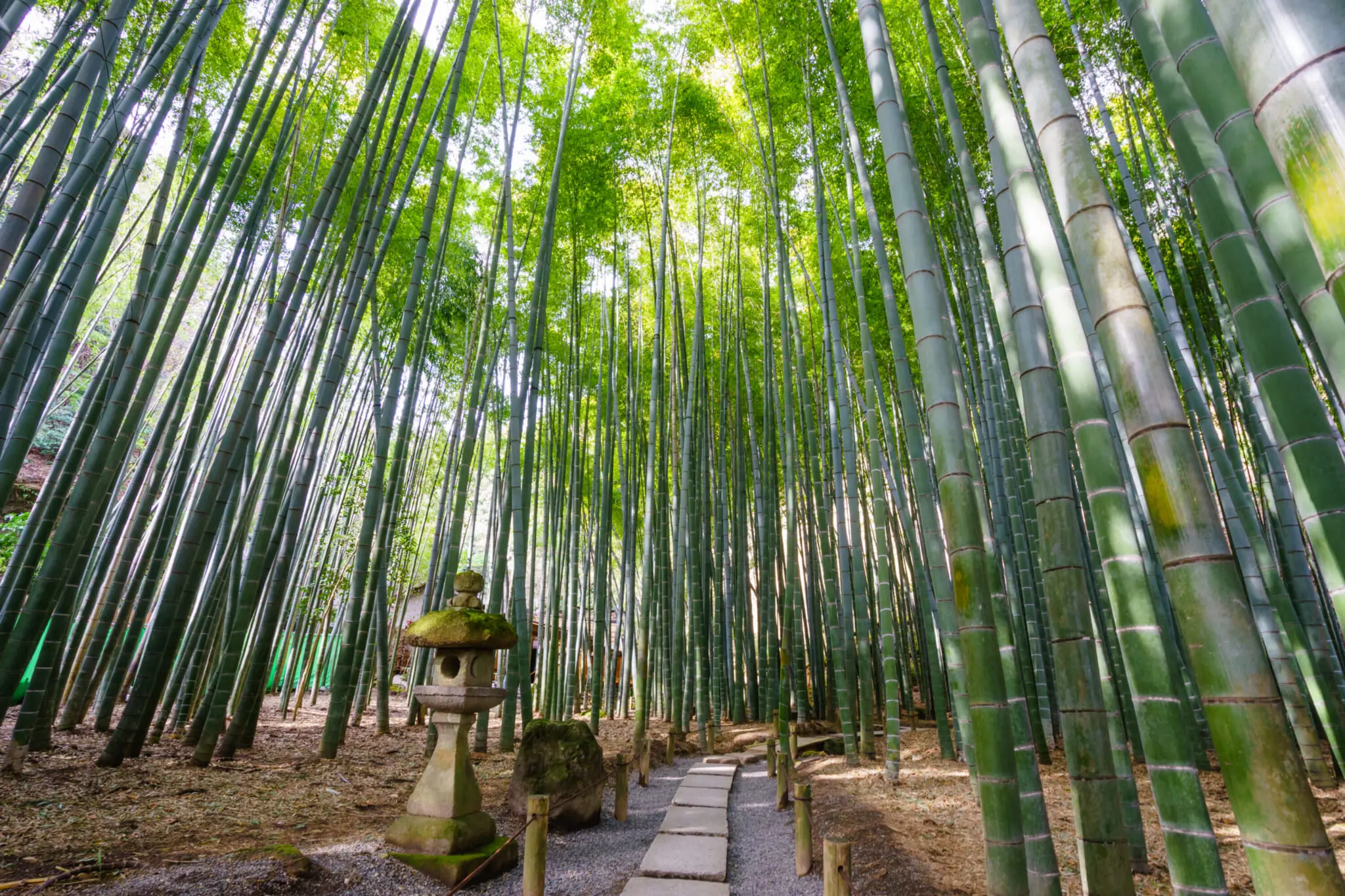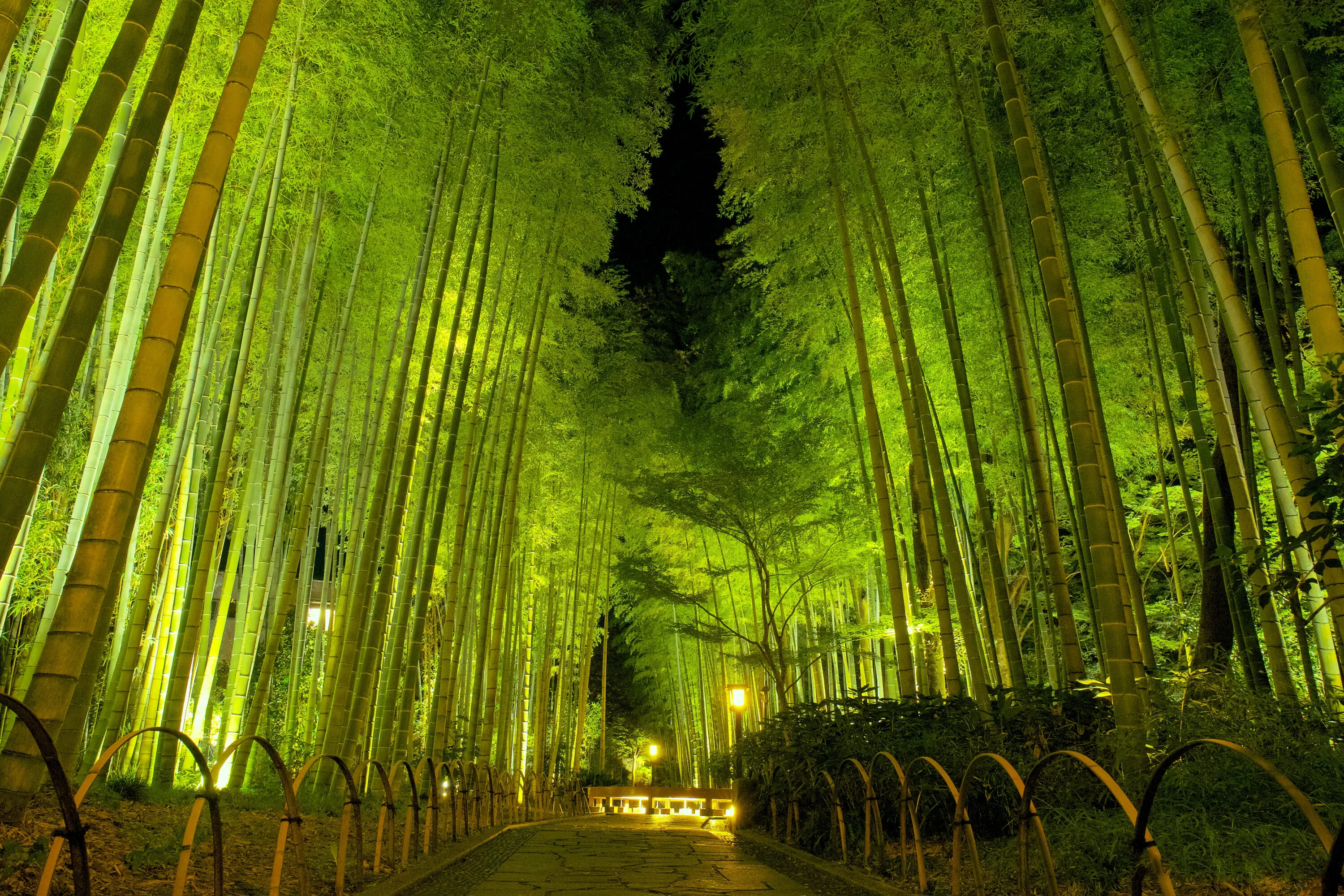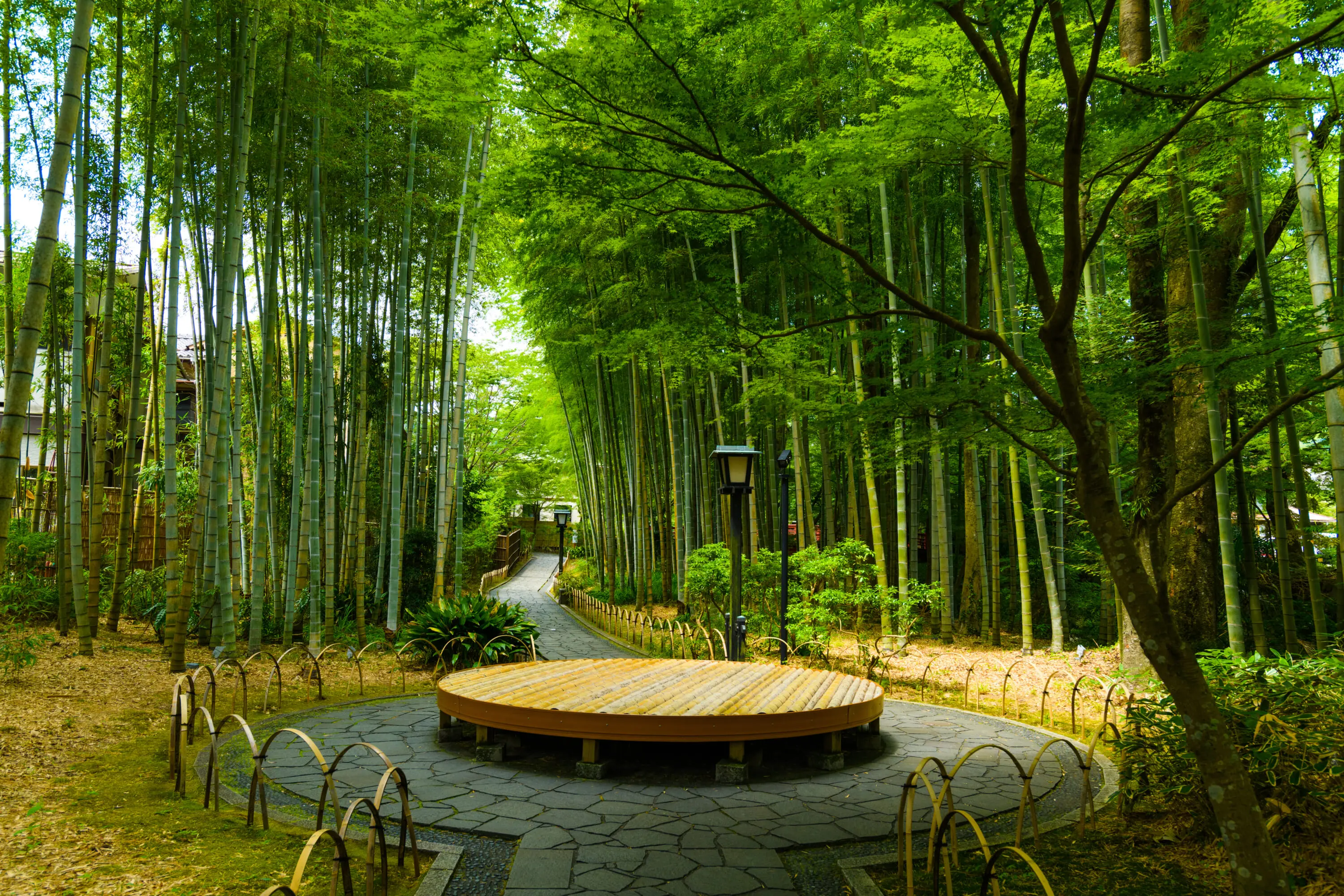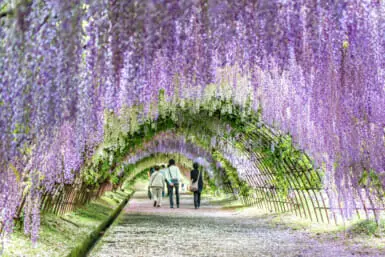Bamboo is a quintessential part of Japanese culture, just like the red Torii gates, Mount Fuji, kimono and anime characters. Any trip to this country wouldn’t be complete without a visit to a slender green bamboo forest. For most people, that would usually be the Arashiyama Bamboo Forest in Kyoto. However, just like the other top Kyoto attraction, Fushimi Inari Taisha Shrine, Arashiyama is so overrun with tourists, it’s hard to enjoy it. A leisurely stroll while listening to the rustle of bamboo leaves is no longer possible.
Just like there are alternatives to Fushimi Inari Taisha, though, there are alternative bamboo forests in Japan that are as beautiful as Arashiyama but far less crowded. Here are some recommended bamboo forests to visit instead of Arashiyama in Kyoto.
Greater Tokyo
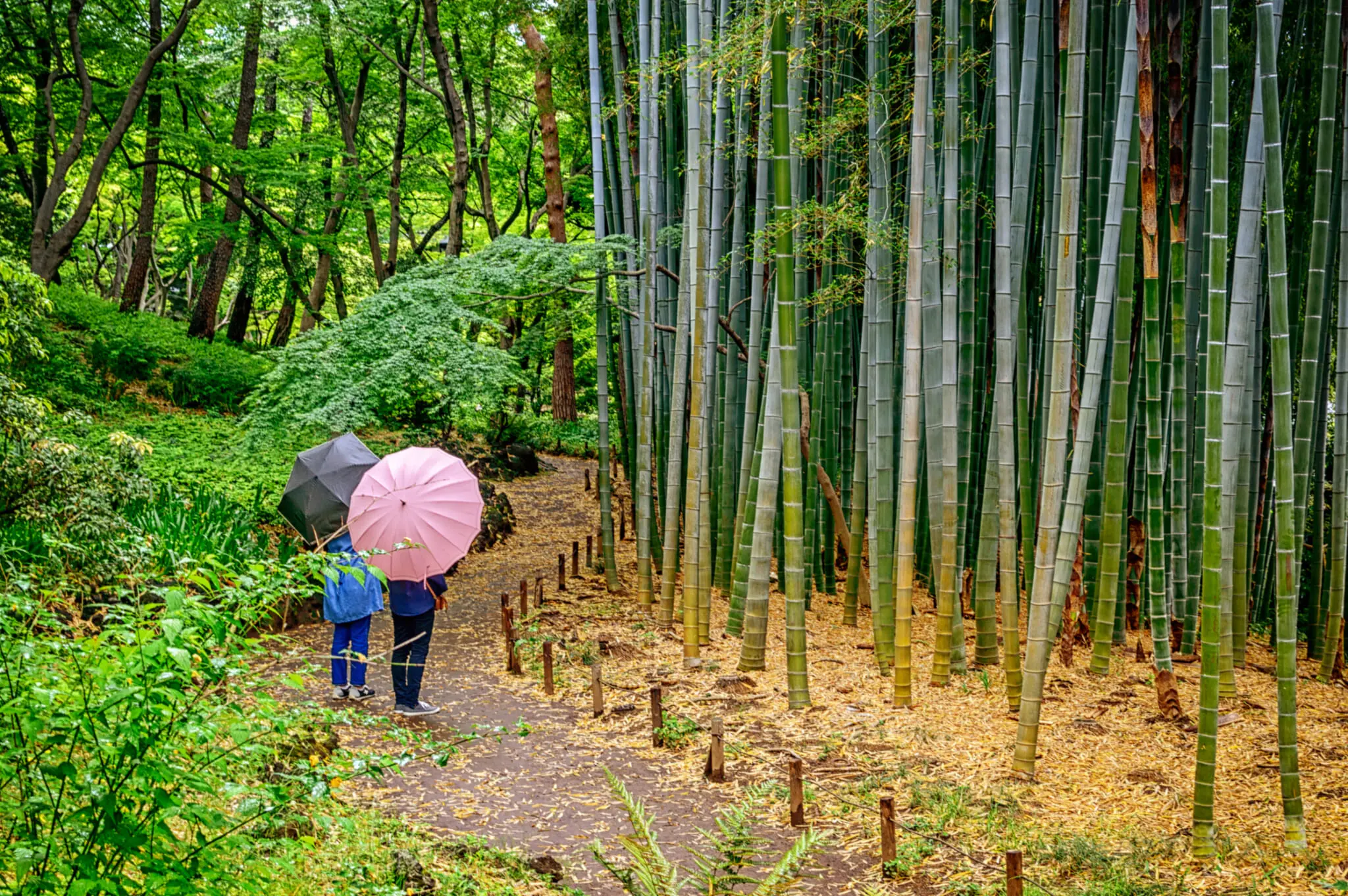
Photo by Tataya Kudo via Shutterstock
Tonogayato Gardens Bamboo Forest
You don’t need to go far from Tokyo to see a bamboo grove. There’s one in the Tonogayato Gardens located just a couple of minutes on foot from JR Kokubunji Station. Kokubunji is in west Tokyo and only 20 minutes from Shinjuku Station via the express train on the Chuo line. A short trip to Tonogayato Gardens is well worth it, as this designated cultural asset is public and entrance is a symbolic sum of ¥150. The gardens are a marvel of landscaping, boasting diverse views from the aforementioned bamboo grove to a waterfall, a pond and a teahouse. The natural terrain of this area makes the space feel even bigger than it is.
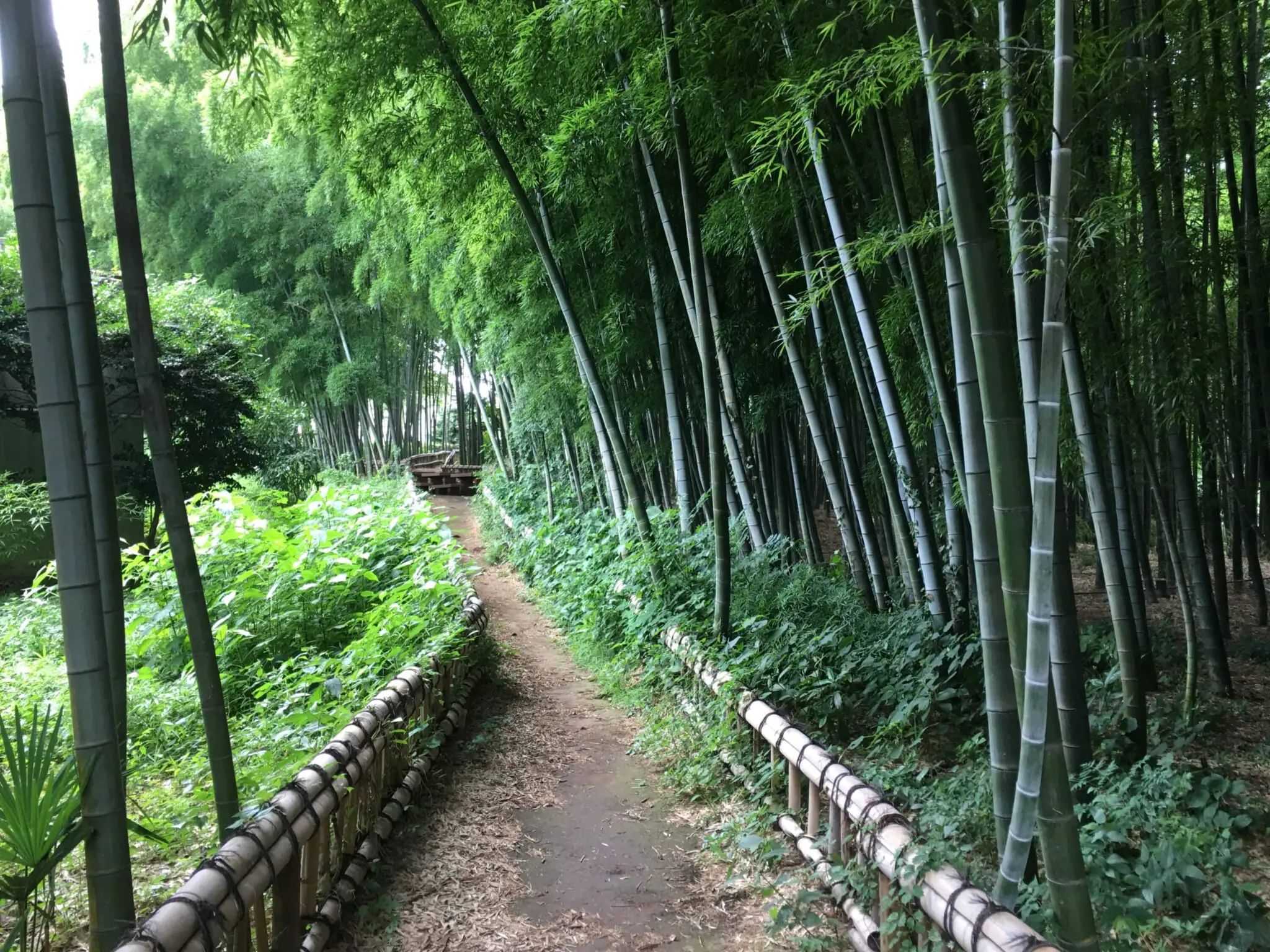
Photo via Wikimedia Commons by Mikhail Kotykhov
Chikurin Park Bamboo Forest
Not in central Tokyo but still within the Tokyo metropolitan area, Chikurin Park Bamboo Forest is in the Tama area and accessible in under an hour by train. The lush natural reserve boasts over 2,000 trees intersected by rustic paths that make for long pleasant walks. Many visitors bring lunchboxes to enjoy picnics in the rest areas and at the park tables. It is a relaxed and laid-back space that is often overlooked, so you can sometimes have the bamboo forest all to yourself.
Kamakura
Hokokuji Temple Bamboo Forest
Venture a tiny bit out of Tokyo to the ancient capital of Kamakura for a day trip full of history. The charming town is known as an alternative to Kyoto and Nara due to its numerous beautiful temples and the Great Buddha. Best known for its 2,000-tree bamboo forest, Hokokuji is a serene Buddhist temple dating back to the Muromachi Period (1333-1573). Although it’s less crowded than Arashiyama, Hokokuji’s bamboo forest, with it charming narrow footpaths, is rising in popularity.
For a small fee, you can sit at the teahouse and enjoy a cup of freshly whisked matcha and an unobstructed view of the bamboo. It’s the ultimate tranquil experience combining not only a visit to a bamboo forest, but also a temple visit and a matcha tasting.
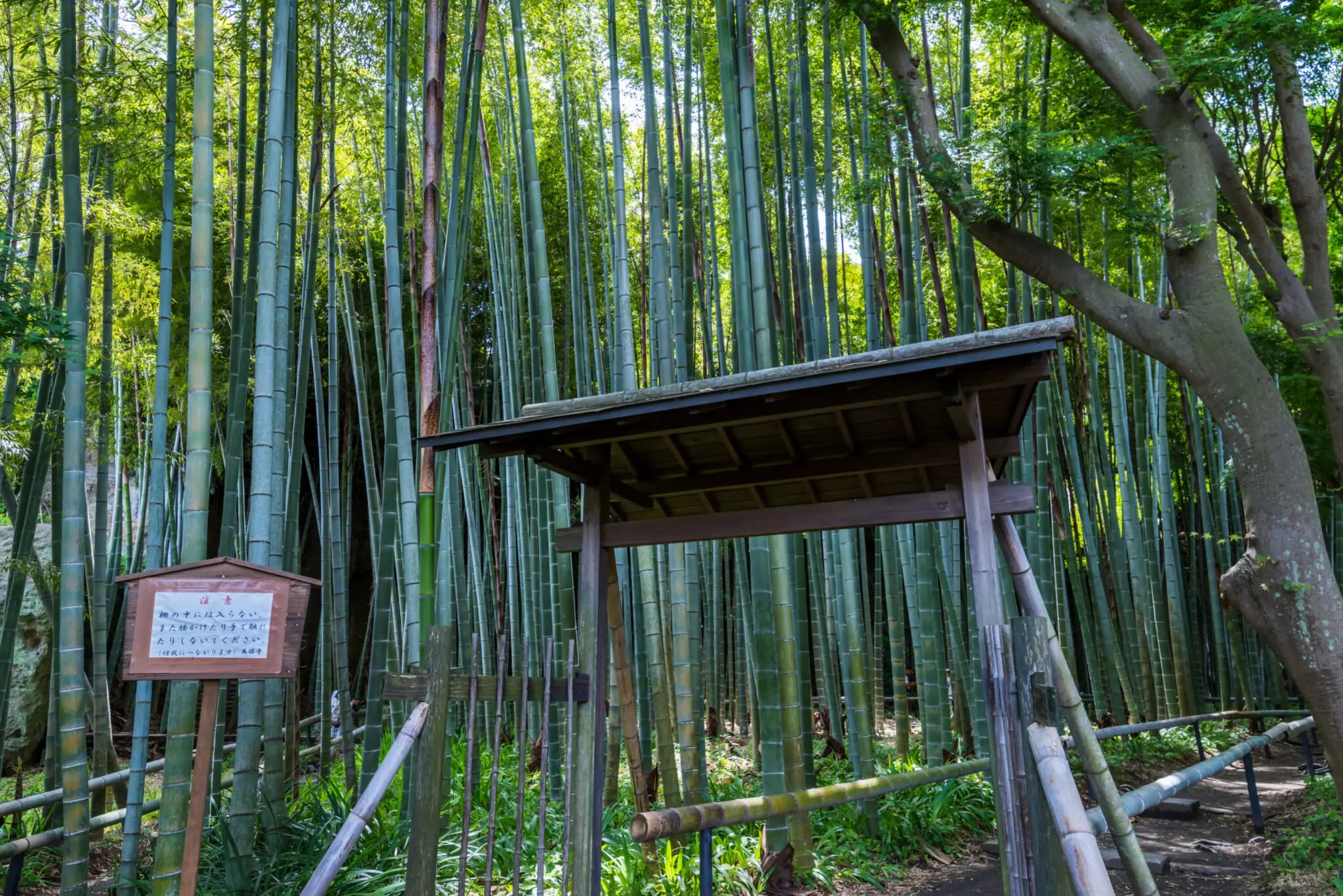
Photo by Picture Cells via Shutterstock
Eishoji Temple Bamboo Forest
Aside from Hokokuji’s bamboo forest, there’s another lesser known spot in Kamakura. Eishoji Temple is designated as an Important Cultural Property of Kanagawa Prefecture for its historical significance. While the authentic wooden buildings and stone caves in themselves make for a good visit, it’s the temple’s bamboo forest that truly stands out. Even on weekends, there are only a couple of visitors at a time, making for a very tranquil experience. There’s a small entrance fee of ¥300 yen but it’s well worth it for the experience.
Shizuoka
Shuzenji Bamboo Forest Path
Located in the center of the Izu Peninsula, Shuzenji is a little onsen town that was nicknamed “little Kyoto” centuries ago — in part due to its impressive bamboo forest path that looks like the one in Arashiyama. The Shuzenji Bamboo Forest Path stretches alongside the Katsura River between two picturesque red bridges.
Many visitors are encouraged to dress up in a yukata for the stroll because it is an onsen town where yukata is the go-to attire. You can also rest on wooden benches and take in the view for longer, even well into the night. In the evening, the whole bamboo forest in Shuzenji lights up, offering more magical views.
Tochigi
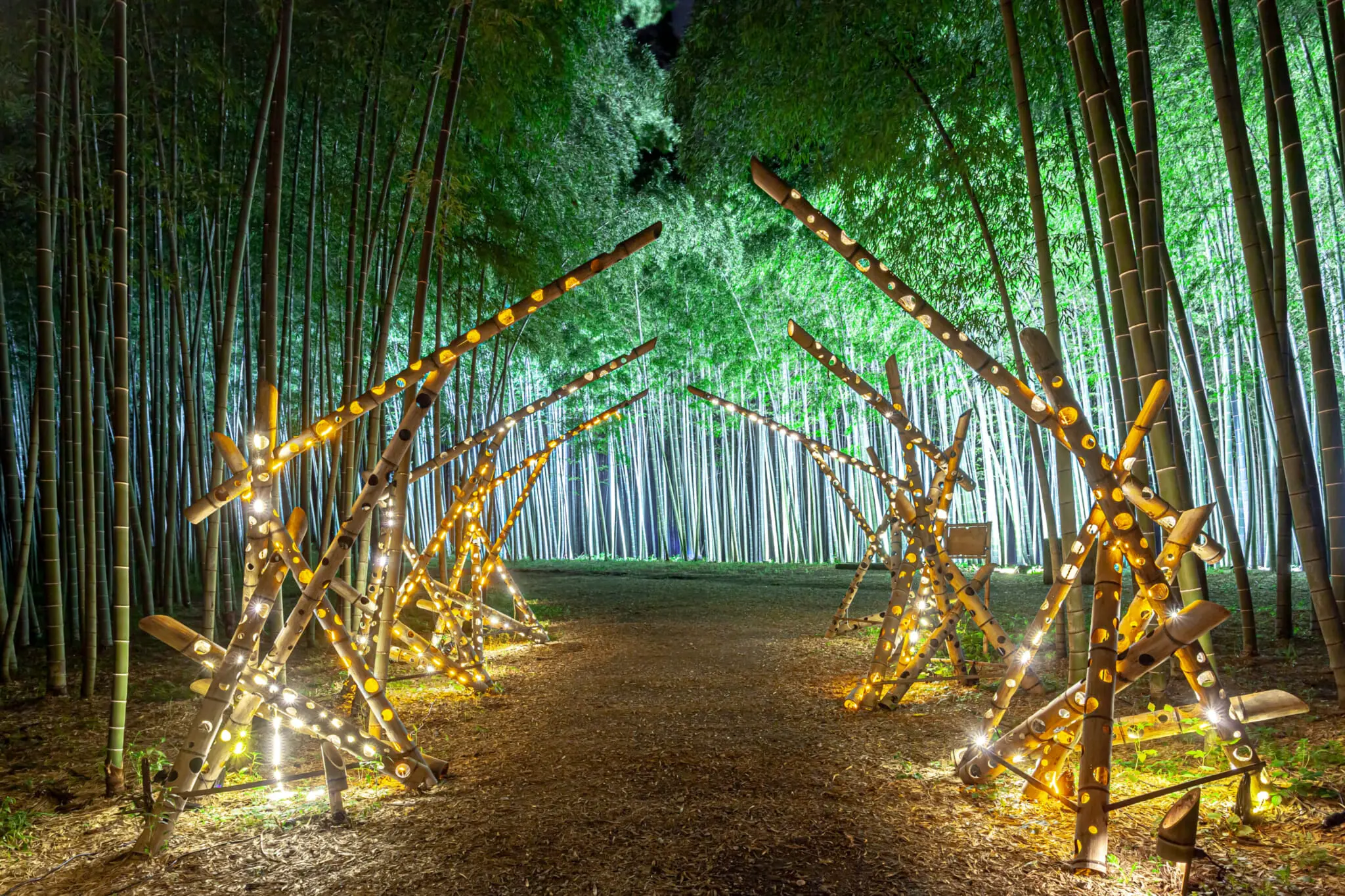
Utsunomiya: Wakayama Bamboo Farm
One of the largest bamboo forests in all of Japan, the Four Seasons Bamboo Forest Wakayama Farm grows about a dozen different bamboo varieties. It’s vast, with an ocean of green bamboo as far as the eye can see. This bamboo forest doesn’t get too crowded, so it is often used for filming commercials and television series too. In fact, due to its status as a shooting location, fans would occasionally visit, giving the owner the push to open the farm to the public. The Wakayama Bamboo Farm has existed for more than 80 years, but it’s been open to visitors for only a few years.
Bamboo features in a myriad of ways, from bamboo decorations to matcha served in bamboo cups. Have fun exploring and spotting all the bamboo accessories that are traditional crafts. In spring, you can also go digging for edible bamboo shoots, picking berries in summer and gathering chestnuts in autumn. In winter, the bamboo forests light up on weekends to create a fairytale-like scene.
The farm is conveniently located less than two hours from Tokyo, on the way to the national park and UNESCO heritage site Nikko. Entrance costs only ¥500, double with a cup of matcha and triple with an illumination ticket.
Kyoto
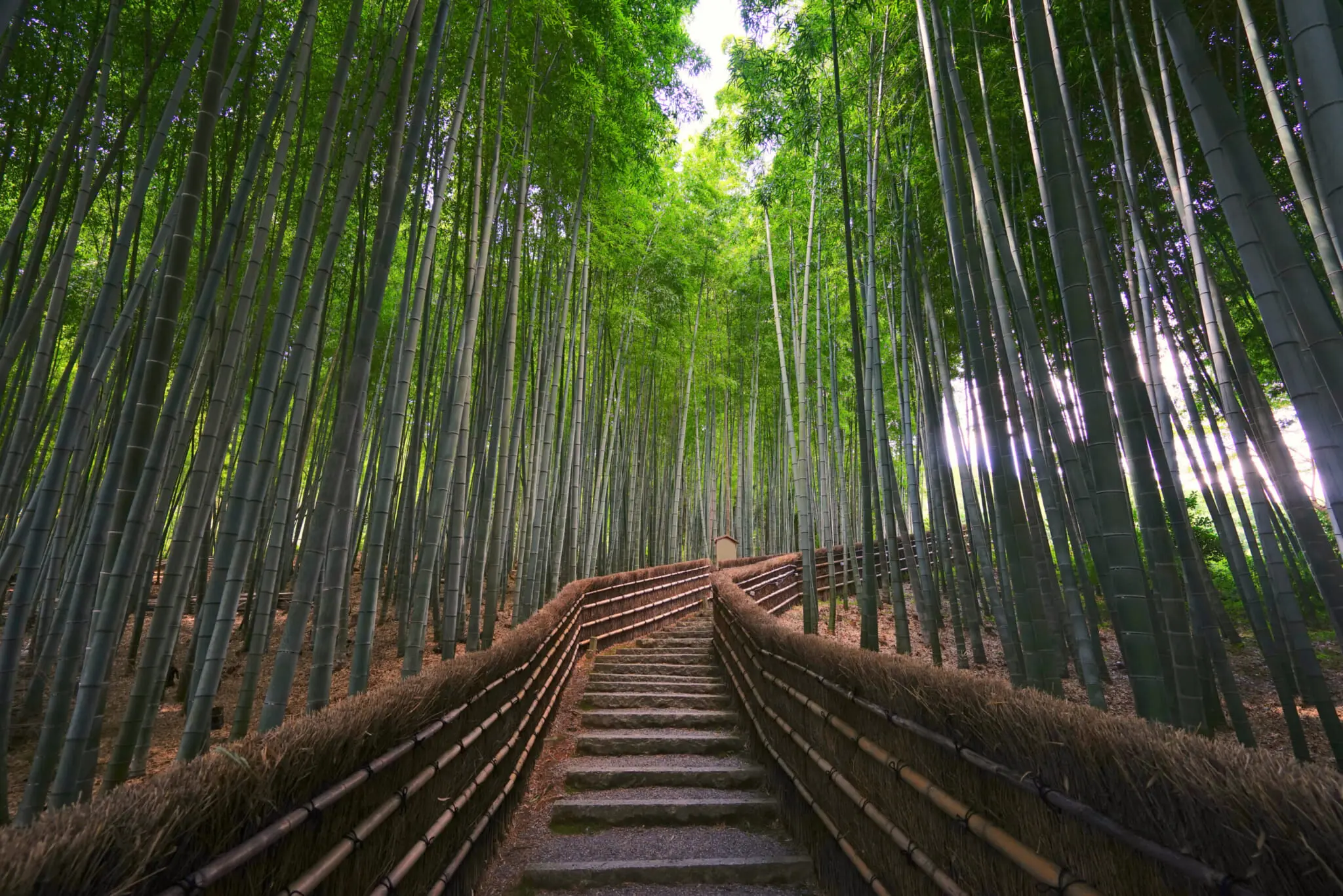
Adashino Nenbutsuji Temple
Adashino Nenbutsuji Temple Bamboo Forest
Finally, when in Kyoto, everyone undoubtedly flocks to the Arashiyama Bamboo Forest. However, there’s also a much less crowded alternative even in Kyoto. The Adashino Nenbutsuji Temple Bamboo Forest resembles Arashiyama so much, it’s hard to tell them apart in photos. They have the same bamboo and straw fence weaving through the tall bamboo growing on both sides. The paths in Adashino Nenbutstuji Temple are smaller, narrower, steeper, but most importantly — much less crowded and more relaxed. The stairs also make for a more dynamic landscape and are picturesque.
Among Japanese people, however, this temple is better known and respected for its little Buddha statues. There are over 8,000 of them and they are dedicated to lone souls who died without a family. The locals also love this temple particularly because of its breathtaking autumn foliage, so note that the crowds descend during that season.

